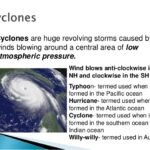UN says ozone layer slowly healing, hole to mend by 2066: Basics Explained

As per the new United Nations report Earth’s protective ozone layer is slowly but noticeably healing at a pace that would fully mend the hole over Antarctica in about 43 years.
A once-every-four-years scientific assessment found recovery in progress, more than 35 years after every nation in the world agreed to stop producing chemicals that chomp on the layer of ozone in Earth’s atmosphere that shields the planet from harmful radiation linked to skin cancer, cataracts and crop damage.
Chlorine levels are down 11.5% since they peaked in 1993 and Bromine, which is more efficient at eating ozone but is at lower levels in the air, dropped 14.5% since its 1999 peak, the report said.
LEARNING FROM HOME/ WITHOUT CLASSES/ BASICS
The ozone layer, a delicate layer of gas, shields the Earth from the harmful rays of the sun.
The United Nations urges the citizens of the world to show support the Kigali Amendment to the Montreal Protocol, which came into force on January 1, 2019. According to the Kigali Amendment, by phasing down hydrofluorocarbons (HFCs), which are potent climate-warming gases, the world can avoid up to 0.4 degree Celsius of global temperature rise by the end of the century, while continuing to protect the ozone layer.
OZONE DEPLETION
Ozone is a form of oxygen. Oxygen occurs in three different forms in the atmosphere: as oxygen atoms (O), as oxygen molecules (O2) and as ozone (O3).
Ozone’s unique physical properties allow the ozone layer to act as our planet’s sunscreen, providing an invisible filter to help protect all life forms from the sun’s damaging UV (ultraviolet)rays. Most incoming UV radiation is absorbed by ozone and prevented from reaching the Earth’s surface. Without the protective effect of ozone, life on Earth would not have evolved the way it has.
Ozone depletion occurs when the natural balance between the production and destruction of stratospheric ozone is tipped in favour of destruction.Although natural phenomenon can cause temporary ozone loss, chlorine and bromine released from synthetic compounds is now accepted as the main cause of a net loss of stratospheric ozone in many parts of the world since 1980.
MONTREAL PROTOCOL
The UN General Assembly adopted a resolution which proclaims 16th September as the International Day for the Preservation of the Ozone Layer, to commemorate the signing of the Montreal Protocol on the Substances that Deplete the Ozone Layer which was signed on 16th September, 1987. India become party to the Montreal Protocol in June 1992.
The Montreal Protocol, an international agreement signed by 197 countries aimed at healing the ozone layer. Heralded as a landmark environmental treaty – the first in UN history to achieve universal ratification.It seeks to cut the production and consumption of ozone depleting substances in order to protect the earth’s fragile ozone layer. It also aims at phase out HCFCs by 2030. Under this Protocol the first concrete step to save the Ozone layer was taken by immediately agreeing to completely phase out chlorofluorocarbons (CFC), Halons, Carbon tetrachloride (CTC) and Methyl chloroform (MCF) as per a given schedule.
ULTRAVIOLET RADIATION
Ultraviolet radiation is the one form of radiant energy coming out from the sun. The sun emits a range of energy known as the electromagnetic spectrum. The various forms of energy, or radiation, are classified according to wavelength. The shorter the wave-length, the more energetic the radiation. In order of decreasing energy, the principal forms of radiation are gamma rays, x-rays, UV (ultraviolet radiation), visible light, infrared radiation, microwaves, and radio waves. Ultraviolet, which is invisible, is so named because it occurs next to violet in the visible light spectrum. The three categories of UV radiation are :
UV-A between 320 and 400 nm; UV-B between 280 and 320 nm; UV-C between 200 and 280 nm
Of these UV-B and C being highly energetic and are dangerous to life on earth. UV-A being less energetic is not dangerous. Fortunately, UV-C is absorbed strongly by oxygen and also by ozone in the upper atmosphere. UV-B is also absorbed by ozone layer in the Stratosphere and only 2-3% of it reaches the earth’s surface. The ozone Layer, therefore, is highly beneficial to plant and animal life on earth in filtering out the dangerous part of sun’s radiation and allowing only the beneficial part to reach earth. Any disturbance or depletion of this layer would result in an increase UV-B and UV-C radiation reaching the earth’s surface leading to dangerous consequences. Increased penetration of solar UV-B radiation is likely to have profound impact on human health with potential risks of eye diseases, skin cancer and infectious diseases.






0 Comments